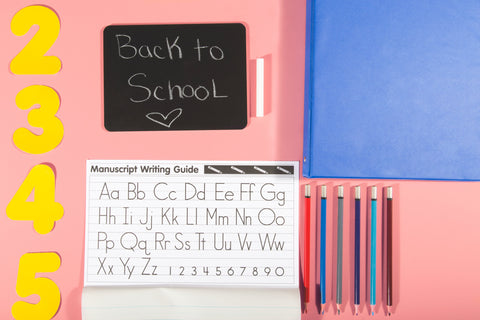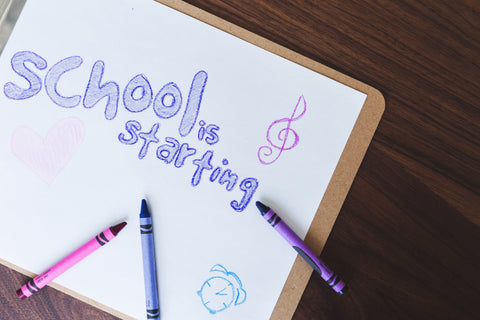For many kids, the school bell has officially rung and the 2021 school year is officially on. The 2020 school year was one for the record books. Many kids spent the majority of time learning from home instead of sitting in a classroom while parents worked remotely. By the end of the school year, vaccinations were in full swing and businesses were slowly getting back to normal. For the first time in a year, families could actually make travel plans while continuing to wear masks and having added protection from COVID thanks to the three vaccines.
Like many families, it looked like the 2021 school year would have a sense of normalcy. Instead, like a repeat of a nightmare, COVID resurged in the form of a delta variant which originated overseas.
Even with teens 12 through 17 now eligible for the vaccine, many parents are still hesitant about vaccinating their children given the unknown side effects and how they affect children. Additionally, the hyper-political issue of mask wearing has now reached school districts, where administrators and educators must contend with keeping students and staff safe while not infringing on the rights of parents who don’t agree with mask mandates.
With all this in mind, what can kids look forward to this school year and how should parents prepare their kids for another strange year of learning?
A Return to the Classroom
Even with the rate of vaccinations waning in the US, the start of the school year for many schools was looking bright. Students would be returning to the classroom taking simple preparations such as mask wearing and practicing social distancing. In many large cities and towns, infection rates were low and it appeared COVID was well under control.
That sense of security and safety gave school districts the confidence to believe kids would be returning to the classroom. There was practically no talk of remote learning and parents began buying up school supplies in preparation for that first day of school.
But by the middle of summer vacation, the country watched as the Delta variant of COVID finally arrived. A far more infectious version of the virus Americans dealt with last year, schools braced themselves for new health restrictions and decisions from their school boards on how to operate.
Before the start of the school year, parents worried their child’s school would experience the same issues from 2020. This meant the potential for schools to be shut down because of a mass outbreak of COVID or returning to remote learning because of high infection rates. While having children learning at home was safer than sending them to campus in 2020, it created a major inconvenience for essential workers who couldn’t leave children at home alone.
Balancing Safety while Respecting Parent’s Rights
Probably one of the most controversial and contentious issues parents and students are likely to experience this year is the debate about school districts mandating masks in schools. While the effectiveness of masks has been talked about ad nauseam, there are still many people who believe they restrict breathing and cause more harm than good. As such, many parents refuse to have their children wear masks and have become vocal at school board meetings where the topic of mask mandates is the main discussion.
While it’s safe to say that parents will make the best decisions for the health and safety of their children, the debate over mask mandates has become a politically polarizing issue and parents on both sides of the issues are passionate about their views.
What is certain is school districts where masks are optional are likely at the highest risk for spreading the virus to students, regardless of their vaccination status. This potentially puts schools at risk for returning to remote learning in order to prevent further infections.
Some school districts have implemented mask mandates in defiance of state bans on mask mandates. Because of this, it’s important for parents to stay informed on how their school district is handling the health and safety of students at their child’s school.
Additionally, parents will need to be extra careful sending a child to school with a simple case of the sniffles. Schools will likely ask children to be kept at home if they are showing the symptoms of COVID in order to prevent accidental infections. It may also mean having children test negative for COVID before kids are clear to go back to the classroom.
On the bright side, schools have had plenty of time to become masters at disinfecting classrooms and offices to make sure students have a clean environment to learn. Many desks are now kept six-feet apart and are equipped with clear plastic shields. Teachers were some of the first people to be vacated and school districts made it easy for them to get their vaccines quickly. Sanitization stations are no common place and allow kids to have access to hand sanitizer and wipes. These small steps can play a big part in keeping infection numbers in schools as low as possible.
Learning May not Always Be Virtual
Remote learning proved difficult in 2020 as teachers rushed to get curriculum in place and assign tablets and laptops to students. It also exposed the technological divide faced by many families across the country. The pandemic left many families unable to pay for internet service and non-technologically savvy parents found themselves frustrated using technology that didn’t always work as intended.
Still, despite all the issues and the frustrations of teachers trying to get students to complete assignments, there are still parents who are more comfortable having their children learn at home versus taking the risk of sending them to school with the Delta variant spreading quickly.
However, not all school districts are offering remote learning for students. Many districts currently offer limited remote learning opportunities or have done away with it all together. Remote learning has also become a contentious issue among political leaders and state governments have threatened school districts by refusing to release funds if schools do not limit or completely do away with remote learning.
Because of this, it’s important for parents to reach out to their child’s school and find out the policy on remote learning for the 2021 school year. There may be exemptions for some students parents can take advantage of if they have medical issues which place them at a higher risk than others.
More than First Day Jitters
Junior high and high school students who have already dealt with a year of pandemic procedures and having their lives flipped upside down thanks to COVID. It should come as no surprise to parents if their students feel a bit hesitant going back to school.
While conversations have focused mostly on preventing infections, 2020 also taught us to focus more on the mental health of teens and kids. High school is an important time in the life of a teenager. They develop deep friendships, create childhood memories, and they learn how to interact with their peers and learn to deal with various social issues for the first time. Instead, 2020 kept many of them at home, locked up in their rooms and learning via computer.
For the majority of teens, there were no football games, school dances, parties, or even graduations, an important event in the life of a teenager.
The year-long isolation has had a major effect on the mental health of teens who couldn’t do the typical things teens do. This lead to an increase in teen depression. An increase in anxiety was also prevalent in teens hoping to get into the college of their dreams or making sure their grades wouldn’t suffer under remote learning. Many felt like years of hard work could simply go down the drain by no fault of their own.
Thankfully, acknowledging these increases has started a more in-depth conversation between kids, parents, and educators. It has also brought about more conversations among adults who also suffer with depression and anxiety.
Making the Best
Despite all the new challenges both educationally and politically, parents should do their best to make the school year as fun and rewarding as possible. Fully vaccinated kids and parents have a bit more protection from COVID, and when combined with masks and proper hygiene, the risks of infections drop significantly.
The pandemic has given educators the opportunity to teach young kids about caring for others and being supportive. It has also forced school districts and leaders to do more to address the technological divide and mental health issues among their students.
While schools are doing their best, parents should also work hard to not only keep their kids safe and healthy, but also make sure they’re getting the positive reinforcement they need to tackle another challenging school year. Thankfully, 2021 has something 2020 didn’t have to offer. And that is a vaccine available to millions of adults and now teens.




Comments (0)
There are no comments for this article. Be the first one to leave a message!